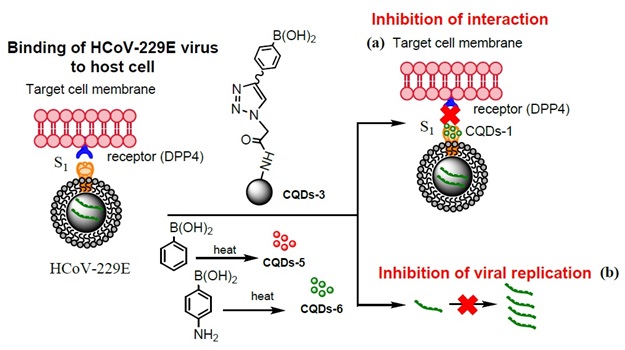The ongoing coronavirus outbreak in Wuhan, China, causing rising death tolls, is a wake-up call for global health, in so far as many researchers have turned their focus to this growing threat.
Coronaviruses are a group of viruses that attack the upper and lower respiratory tracts in humans and cause a range of illnesses from the common cold to more serious forms such as severe acute respiratory syndrome (SARS) and the Middle East respiratory syndrome (MERS) which are life-threatening. These viruses can be transmitted to humans by different species of animals, including camels, cats, and probably bats.
Virions of coronavirus are in the form of spheres with an average diameter of 125 nm. They have a viral envelope and a positive-sense single-stranded RNA genome. Virus particles of coronavirus have four types of structural proteins, namely spike (S), membrane (M), envelope (E), and nucleocapsid (N) proteins, among which the S protein has a crucial role in attaching the virus to its host’s cells and enabling it to enter the cells; thus, an effective way of fighting this virus could be targeting the S protein’s mechanism of action by developing special drugs and inhibiting compounds.
Recently, a group of researchers from the University of Lille, France, and Ruhr-University Bochum, Germany, showed that the CQDs functionalized with boronic acid ligands interfered with the function of coronavirus’s S protein and significantly inhibited its entry into the host cells. Their studies demonstrated that the addition of these nanomaterials to the cell culture medium, before and during infection with coronavirus, considerably reduced the infection rate of the cells. Surprisingly, after one viral life cycle – which is 5.5 hours for coronavirus – a great inhibition activity was also observed at the viral replication step.
These CQDs with an average diameter of 10 nm and excellent solubility in water can be perfect candidates for winning the battle against coronavirus, because they easily enter the cell through endocytosis and interact with the virus’s protein, thereby preventing viral genome replication [1].

Influence of CQDs, prepared by hydrothermal carbonization, on the binding of HCoV- 229E virus to cells: (a) inhibition of protein S receptor interaction, (b) inhibition of viral RNA genome replication [1].
Other nanomaterials have also been found with the same antiviral effect. For instance, a Chinese research team has developed a novel class of peptide inhibitors based on gold nanorods, which selectively target coronavirus’s S protein and disrupt its activity [2].
Furthermore, the coronavirus vaccine has recently been prepared by means of nanotechnology; the researchers of Shizuoka University, Japan, succeeded in synthesizing virus-like particles (VLPs) in the form of nanovesicles using insect cells. These particles are very similar to coronavirus, except that they do not have the virus genome; once they enter into the host’s cells, they stimulate the cells’ immune system to fight the infection caused by this virus type [3].
In order to develop the coronavirus vaccine in the mentioned study, the team expressed the structural proteins of MERS coronavirus in silkworm larvae and Bm5 cells. The S protein of MERS coronavirus – without its transmembrane and cytoplasmic domains – was injected into the hemolymph of silkworm larvae and then purified via affinity chromatography. Afterwards, the purified proteins formed the nanoparticles that were able to attach to the receptor of coronavirus (called dipeptidyl peptidase 4) on the surface of the host cells. The E and M proteins were also expressed similarly, but an important point to consider was the fact that the S protein could only function provided that it was fully displayed on the VLPs; hence, the researchers used surfactant treatment and mechanical extrusion methods to develop S-protein-displaying nanovesicles with diameters of around 100 to 200 nm. Ultimately, the prepared VLP mimetic nanovesicles proved to be effective against MERS coronavirus, and indeed can be used as a nanoparticle-based vaccine to fight the ongoing coronavirus outbreak.
Source
[1] Functional Carbon Quantum Dots as Medical Countermeasures to Human Coronavirus
[2] Novel Gold Nanorod-Based HR1 Peptide Inhibitor for Middle East Respiratory Syndrome Coronavirus
[3] Preparation of virus-like particle mimetic nanovesicles displaying the S protein of Middle East respiratory syndrome coronavirus using insect cells
